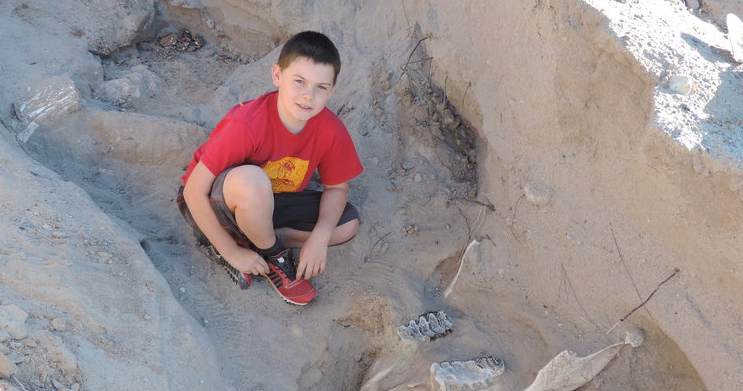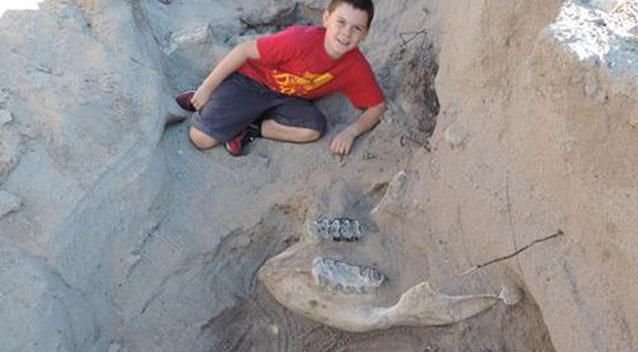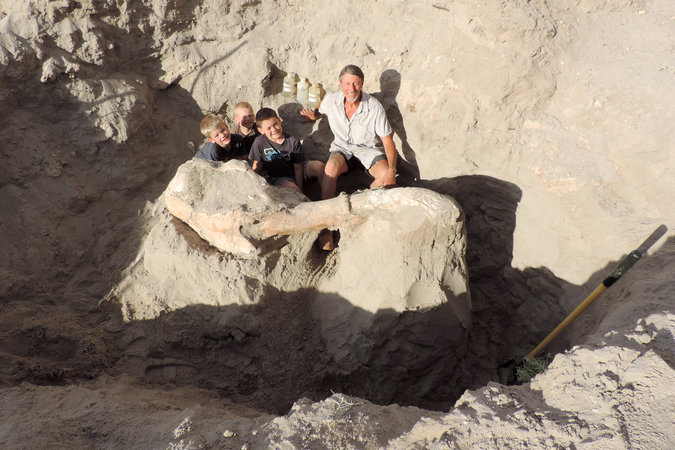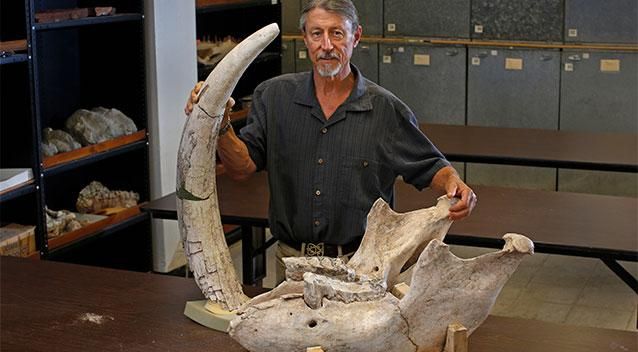You never know when you may stumble on a great discovery. Jude Sparks was just 9 years old when he stumbled upon a piece of history while hiking in the New Mexico dessert with his parents and brothers in November.
"I was running farther up and I tripped on part of the tusk," Sparks said. "My face landed next to the bottom jaw. I looked farther up and there was another tusk."
While he was running to hide from his younger brothers, he tripped and fell.
"It was just an odd shape," Jude, now 10 told the New York Times. "I just knew it was not something that you usually find."
Jude and his family took a photo of the strange discovery and attempted to figure out what they found.
"When we went home, we were trying to research," the boy's mother Michelle Sparks told the New York Times. "It didn't match perfectly with elephants, so then we said, ok, I guess it was something else."
Eventually the family got in touch with Peter Houde a NMSU biology professor.
"For the several types of elephants that we have in the area, this is probably one of the more common of them," Houde said. "But they're still very rare. This may be only the second complete skull found in New Mexico."
The family joined Houde and his team of students and professors as they worked to uncover the skull after getting permission to excavate the area.
See the amazing discoveries they made on the next page.
Once it was uncovered, Houde estimated the jaw alone weighed about 120 pounds with the entire skull weighing in at least one ton.
They determined that these fossils were approximately 1.2 million years old and belonging to a stegomastodon, that once ranged through North and possibly South America.
Alive, it would have stood approximately 8.5 feet tall and weighed around 4.7 tons. Like modern elephants, but unlike most of its closer relatives, it had just 2 tusks. These tusks curved upward and were about 11.5 feet long.
Some describe Jude's find as a dinosaur discovery, but in reality it's not. The stegomastodon was an elephant creature, who roamed the earth within the last few million years and may have even been hunted by humans.
In contrast, the dinosaurs that have best captured people's imagination like the T-Rex, the triceratops and the velociraptor lived in the Mesozoic Era which ended about 66 million years ago.
Houde is thankful the family reached out to him, instead of trying to remove the fossils on their own.
"As you can imagine, when people find out about these things, they might be tempted to go out there and see what they might find themselves and tear up the land or they might hurt themselves," he said. "To be quite honest, all these fossils from this area are radioactive and especially for children, not something you would want in your home."
It's expected that the university will put the skull on exhibit after it's studied and reconstructed, which could take years.
Sources: Yahoo / UPI / New York Times




